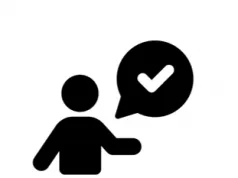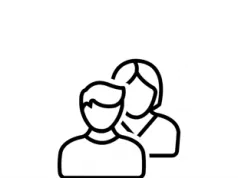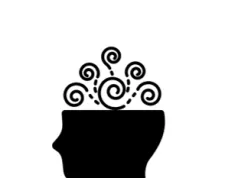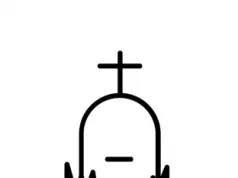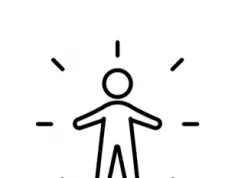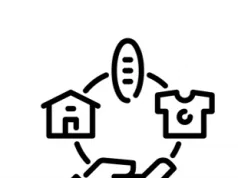Cognitive Behavioural Therapy (CBT) and Cognitive Analytical Therapy (CAT) are two forms of talking therapy that are used in the treatment of many different mental health conditions.
Owing to their similar names, there are many similarities between these two types of therapy. However, there are some differences between the two, which is important for anyone considering accessing talking therapy.
Talking therapy has a range of benefits. Many different types of therapy exist – with CBT and CAT among the most-known. Different people are suited to different types of therapy.

Definition
There are some subtle differences between CBT and CAT, as seen in the below definitions:
Cognitive Behavioural Therapy (CBT): CBT is a type of therapy that is used to treat a range of mental health conditions. CBT involves an individual talking face-to-face with a therapist, although sometimes CBT can be conducted in a group setting. CBT attempts to improve an individual’s wellbeing and mood. The therapy focuses on the link between thoughts, feelings and actions. This can be useful for those with low self-esteem, anxiety, unhelpful personality traits or intrusive thoughts. CBT can help an individual understand their feelings more, and in the long run should lead to an improvement in quality of life.
Cognitive Analytical Therapy (CAT): Cognitive Analytical Therapy provides a form of therapy that combines cognitive and psychoanalytic approaches to mental health. The aim is to instil techniques into an individual that should help improve the symptoms of their condition. There is a very strong focus on the relationship between therapist and client in this type of therapy.
The similarities
CBT and CAT are both typically designed for short-term use – typically over 6-15 sessions. Usually just a few goals will be set at the start of therapy – with a focus on these goals being realistic and achievable.
There are many similar techniques that are used across both types of therapy. This includes keeping a diary or thought journal – which is a technique often used. This allows the therapist to gain a better understanding of their patient.
Both types of therapy look into the link between cognition and behaviour. This includes taking thoughts and feelings into the equation, and looking at the cycle that takes place between these different areas.
The differences
CBT is a very structured and highly researched form of therapy. In fact, it is normally used as a first line of treatment for some mental health conditions in the United Kingdom under the NHS [1].
Therefore, CBT is easily accessible. As mentioned, it is normally the first type of therapy offered on the NHS. Therapists that operate in the private sector are nearly always trained in CBT, such is its popularity.
CAT meanwhile is not used as much, nor has it attracted the same interest or popularity. But it still has its uses. For example, CBT has the limitation of not usually involving the past. CAT meanwhile typically places some importance on the past.
Many people though enjoy CBT’s approach to treating the present day – and find that this type of therapy can lead to changes that can be implemented quickly. CAT takes a step back, and may look at the origins of some issues – therefore taking a brief look at the past.
If a person is struggling with a trauma-based condition or have issues from the past that they wish to address, arguably neither CBT nor CAT are suitable. Instead, a type of therapy like Psychoanalytical Psychotherapy would be more suitable.
CBT itself is focused much more on particular negative thoughts or feelings – and the link between the two and behaviours. However, CAT offers a wider perspective, and can be useful for those who feel CBT is too limited.
Summary
It is possible to derive benefit from both CBT and CAT – both are types of therapy which have helped many people with their mental health. Some people will find one works better than the other – it is normally down to the individual.
Anyone that is seeking an improvement in their mental health should certainly consider these types of therapy. For more information, consider accessing our main therapy section – where a wealth of information and advice is available.
Read Now
- Therapy Home
- Everything You Need To Know About Talking Therapy
- FAQ’s About Talking Therapy
- Cognitive Behavioural Therapy: Everything You Need to Know
- The Advantages and Disadvantages of Cognitive Behavioural Therapy
- 8 Things You Should Know About Cognitive Behavioural Therapy
- What To Do When Cognitive Behavioural Therapy Doesn’t Work
- 5 Criticisms of Cognitive Behavioural Therapy
- What is the Difference Between Cognitive Behavioural Therapy and Cognitive Analytical Therapy?
- How Does Cognitive Behavioural Therapy Work?
- What Conditions Can Cognitive Behavioural Therapy Help With?
- What is the Difference Between Cognitive Behavioural Therapy and Dialectical Behavioural Therapy?
Disclaimer
This website should be used purely for informational purposes, and does not intend to, nor should it ever, be used as a replacement for professional medical advice.
We strive to keep all of our pages updated, and ensure that our website is full of factual and in-depth information. However, we encourage you to browse this website with care.
As a reminder, this website and all content within it cannot and should not replace the advice of a trained medical professional. You can read our full disclaimer at this link.
Helplines
If you are struggling with your mental health, help is available. With the right support and treatment, you can make a recovery. For information on helplines, or if you are in a state of crisis, please visit our crisis page by clicking on the relevant link for your geographical location (United Kingdom), (United States), (International). You can also see how to get mental health treatment and the process involved by clicking this link.
References
[1] NICE. (2009). Depression in adults: recognition and management Clinical guideline [CG90]. Available: https://www.nice.org.uk/guidance/cg90/ifp/chapter/treatments-for-mild-to-moderate-depression. Last accessed: 20th May 2022.


